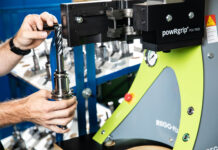What is sustainable manufacturing?
Sustainable manufacturing is about cleaner and more efficient manufacturing with less resource consumption, less waste and emissions. It’s a way to minimize negative impacts on the environment while meeting demand in a much more efficient way.
For example, an automaker using sustainable manufacturing at a factory might be able to cut its emissions by as much as 90 percent using advanced cleaner processing technologies. It could also reduce its production waste to near-zero by switching supplied parts from single-use to reusable ones, accepting more recycled materials in production, and applying innovation to make vehicles more efficient and longer lasting.
What does sustainable manufacturing look like today?
Sustainable manufacturing has gained a lot of attention for many years; however, implementations and adoption have been uneven in industry. Some sectors are advanced in their implementations while others are beginning the journey. There are many great examples of companies who have a long history of successful implementations, such as Caterpillar, Unilever, Nike, and many others.
 What are some typical roadblocks organizations face when trying to sell the idea of sustainable manufacturing to higher ups in an organization?
What are some typical roadblocks organizations face when trying to sell the idea of sustainable manufacturing to higher ups in an organization?
Companies are interested in efficiency, doing more with less. Sometimes there’s a perception that “sustainability” is separate from that principle, but it’s not. Advocates for sustainable manufacturing need to be able to communicate its value in light of the real pressures manufacturers face, such as the cost of materials, consumer demand, and return on investment. In most cases, investing in sustainable manufacturing can result in lower material costs because all the value that typically goes to waste is retained. It also helps to meet growing consumer demand for more sustainable products. Most importantly, sustainable manufacturing drives economic growth; it’s a pathway for implementing new technologies and processes that are much more cost-effective and productive than legacy systems.
What role does automation play in sustainability, particularly in sustainable manufacturing?
Automation, Industry 4.0, IIoT, and other cutting-edge technologies contribute to higher efficiency and lower waste and emissions. So, a sustainable manufacturing system does not have to be automated; however, if automation is applicable, it will definitely help achieve higher efficiency.
How realistic is it that manufacturers today would steer away from their current manufacturing operations and begin to embrace ones that are more sustainable?
Switching to sustainable manufacturing does not mean that a company suddenly or immediately abandons their current manufacturing operations. Rather, it’s a process that evolves over time; incremental changes are implemented and integrated into an operation once they have been fully tested and validated. Typically, this kind of evolutionary approach to change helps to reduce risk and disruption. However, there are cases where you have a clean slate to work off of — like building a new factory — that present a good opportunity to deploy a series of process and technology changes all at once.
What did we as an industry learn from the COVID-19 pandemic in terms of manufacturing, meeting demand, facing supply chain shortages, and in terms of supporting more sustainable manufacturing practices?
We learned a lot from the COVID crisis. When the risk became known, even though not all agreed, people around the globe took significant measures and actions to address the challenge. We accepted changes to the way we live and interact. We marshaled all of our resources to develop vaccines and address the medical supply shortages. The bottom line is that we rose to the occasion and we, for the most part, took actions to deal with the risk in a significant way.
The environmental challenges we face today, like climate change, are serious global challenges as well. However, they have been occurring over a long time and, unfortunately, mostly have not been taken as seriously as they should have been. We certainly have learned that when we have the will to address serious challenges, we can meet them.
 Please tell me about your role and your work with the United Nations Environment Program’s International Resource Panel.
Please tell me about your role and your work with the United Nations Environment Program’s International Resource Panel.
I serve on the United Nations Environment Programme’s International Resource Panel (UNEP IRP). One of the panel’s roles is to inform policy through validated independent scientific studies, such as the 2019 Global Resources Outlook. The panel consists of 40 prominent experts from around the globe and is supported by a steering committee from different countries as well as a secretariat. The panel work is focused on issues of concern globally and seeks to provide balanced and unbiased recommendations to address them.
I led a study for the panel focused on circular economy implementations a few years ago and I am currently leading another study focused on advancing the circular economy in the consumer electronics sector.
How would you explain sustainable manufacturing?
Early on at the beginning of the Industrial Revolution, emissions, waste, and the consumption of natural resources were low. A lot of the manufacturing impacts on the environment were not taken into account because the volumes that we were generating were much, much lower than we have today. The methods and approaches in manufacturing we use today are really built on a lot of those approaches that we developed back then.
The reality is that the situation today has drastically changed, but our approaches have not. There is plenty of industrialization going on around the globe, which is leading to plenty of pollution and waste generated. In addition, a lot of materials we use in manufacturing are nonrenewable resources.
Sustainability is about the proper balance in a system. Applied to manufacturing, it means we are taking into account the impact of what we do and also making sure we understand the impact on the supply side of natural resources that we use. Sustainable manufacturing is about understanding environmental impacts and making sure we’re not causing negative impacts unnecessarily. It’s being able to ensure that we are able to satisfy our demands now and in the future without facing any environmental challenges.
What do see on the horizon for sustainable manufacturing?
This is an important question that we are working to answer at the REMADE Institute, where I serve as the founding CEO.
REMADE spans the public-private divide, with 153 members that include manufacturers, academic institutions, trade associations, and national laboratories. The technologies developed by REMADE partners are capable of reducing the annual emissions of the U.S. manufacturing sectors that process energy-intensive metals, polymers, fibers, and electronic waste (e-waste) by 11.5 percent, the energy equivalent of 216 million barrels of oil or 50 million metric tons of carbon dioxide removed from the atmosphere, once deployed. Projects to date can generate, once implemented, up to $50 billion in new revenue for U.S. companies.



















